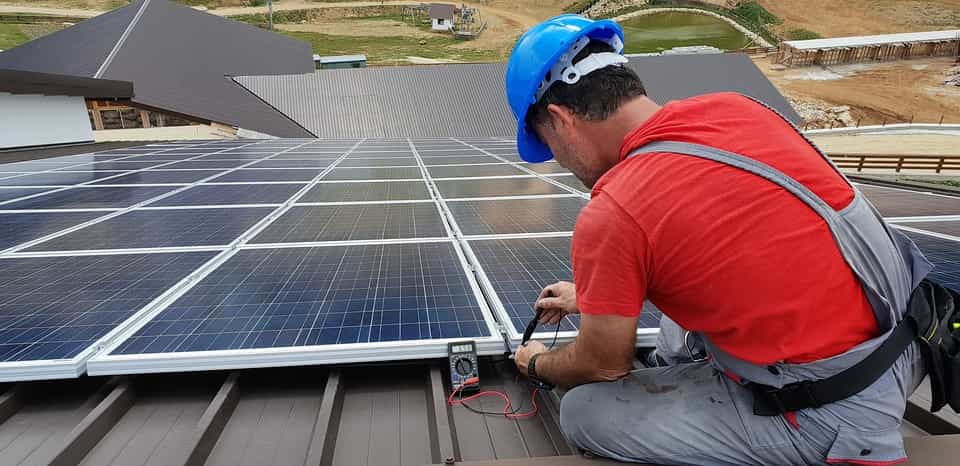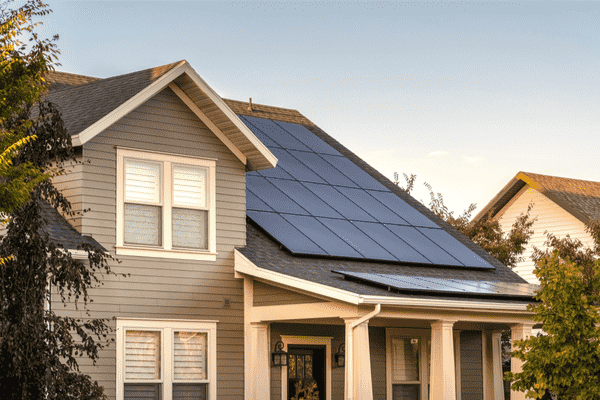When installing a solar panel system at your house, one of the first things to consider is how much physical space your system will require. The size of a solar panel, among other things, determines the quantity of power produced, and the amount of space available affects the number of meetings that may be installed.
As a result, it is critical to consider these considerations while selecting solar panels.
How Much Room Do Solar Panels Need?

How Big Are Normal Solar Panels?
Standard residential solar panel dimensions, which you’d have placed on your roof, are 65 x 39 inches, or 5.4 x 3.25 feet, and cover an area of 15 square feet.
There are minor measurement differences depending on the manufacturer of the solar panel.
Solar panels up to 6 feet in length might be expected for big-scale solar systems such as those installed in warehouses (these are known as commercial solar panels). To comprehend solar panel size, you must first understand the overall composition of the panel.
Individual solar photovoltaic (PV) cells make up solar panels. PV cells are always the same standard size: 156 mm × 156 mm, 6 inches long, and 6 inches broad.
The bulk of small solar installations, such as those you could see in your home, comprises 60 solar cells.
Commercial solar installations, on the other hand, begin with 72 cells and can grow to 98 cells or more.
What Constitutes A Solar Panel?
Solar panels are made of several photovoltaic (PV) silicon solar cells lined up in rows and framed in a lightweight aluminum alloy to make a panel.
On a related topic, the way various businesses frame their panels might vary, which is the major cause of the diversity in industry-standard dimensions.
Each PV cell is 6 inches long and 6 inches broad.
The size of the solar panels might vary, but PV cells are always 6 x 6 inches. To preserve the silicon PV cells, which are highly sensitive, the solar panels are coated with a non-reflective glass covering.
Each PV cell may provide a maximum open-circuit voltage of 0.5 to 0.6 volts. A residential panel of typical size has 60 PV cells, which is the number of solar cells in a solar panel.
Due to its size and efficiency, a household solar panel with 60 PV cells can produce around 250 to 300 watts per hour, making it the most popular solar panel used in houses.
On the other hand, standard-sized commercial solar panels have 72 PV cells with a power output of 350 to 400 watts.
Factors Influencing Solar Panel Size
Panel Composition
The material used to construct the solar panel influences its size and form. Solar panels are available in three main materials: monocrystalline, polycrystalline, and thin film. Monocrystalline, for example, is both the most costly and the most efficient alternative. It is smaller and lighter than thin-film material.
Generally, the more effective the solar panel, the less space it requires and the weaker it is.
Panel Manufacturer
The dimensions and weights of each brand of solar panels vary somewhat depending on the manufacturing material.
Although various solar panels vary, a typical 60-cell solar panel weighs around 40 pounds.
Wattage/Voltage
Wattage and voltage/current needs are other crucial considerations. A solar system is a collection of linked solar panels that provide total system power in watts. The more the wattage of a solar system, the greater the surface area of the panels. To enhance voltage, solar panels can be linked in series or parallel.
Required Electricity Output
It is critical to account for fluctuations in consumption and usage caused by weather changes and the use of various appliances. It is advisable to overestimate your requirements and create extra electricity that may be stored or sold back into the local grid.
Solar panel types
Solar panels can also be made of materials such as monocrystalline, polycrystalline, or thin film.
The primary distinction between the methods is the kind of silicon solar cell used: monocrystalline solar panels utilize solar cells formed of a single crystal of silicon, whereas polycrystalline solar panels use solar cells consisting of multiple silicon pieces fused.
While their composition does not affect their size or weight, monocrystalline cells are more efficient overall.
Thus, fewer of them are required to produce the same output.
Residential and commercial solar panels are constructed the same way, regardless of their purpose. Individual solar photovoltaic (PV) cells make up each solar panel. PV solar cells are typically 156 mm by 156 mm in dimension, or around 6 inches long and 6 inches broad. Most rooftop solar panels are made up of 60 solar cells. However, the norm for commercial solar systems is 72 cells (and can go up to 98 cells or more).
How Much Space Is Required to Power a Standard Household?
The typical American household’s energy use is roughly 10,715 kilowatt-hours, which means you’d need a solar panel system with a power output of 10 kilowatts to power your home.
If you utilize standard-sized 300-watt solar panels, you’ll need 28 to 34 of them, depending on the efficiency of the panels and available roof space.
Multiply the size of the panels in square feet (give or take 17 sq. ft in our instance) by the number of meetings required to calculate the amount of roof space required.
Assume you require 34 panels. This needs 578 square feet of roof space.
Solar panels may be installed anywhere on your property if there is adequate room; they are not restricted to roof space. Before acquiring solar, you should evaluate the available space.
Tip: To find the best solar panel services all you need to do is google it. For example, If I am living in Brighton, I would search Solar Panel Installers Brighton on google and It will show up all the best service provides in Brighton.
Conclusion
After reading this post, we hope you understand the average solar panel size and measurements better.
Many manufacturers worldwide are investing heavily in researching new ways to boost the power and efficiency of solar cells. There will undoubtedly be numerous improvements in green technology in the future, and Bluetti Power will be at the forefront of that innovation.











